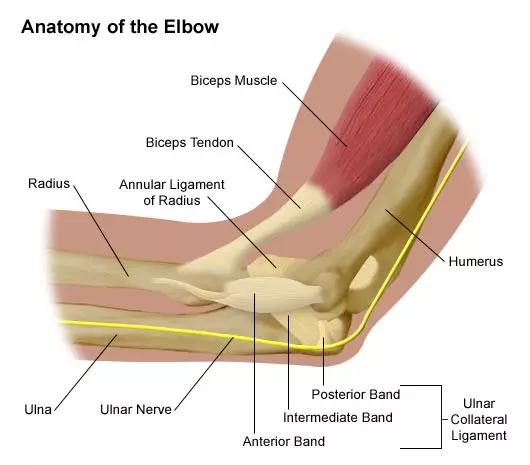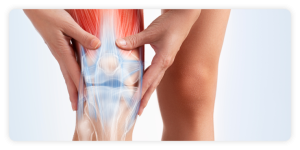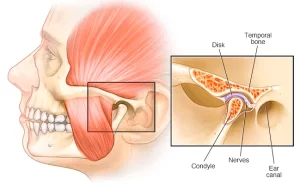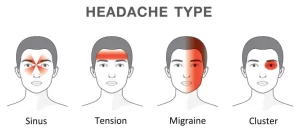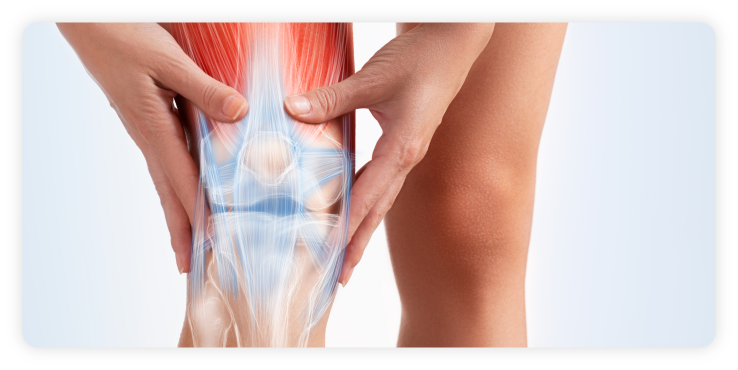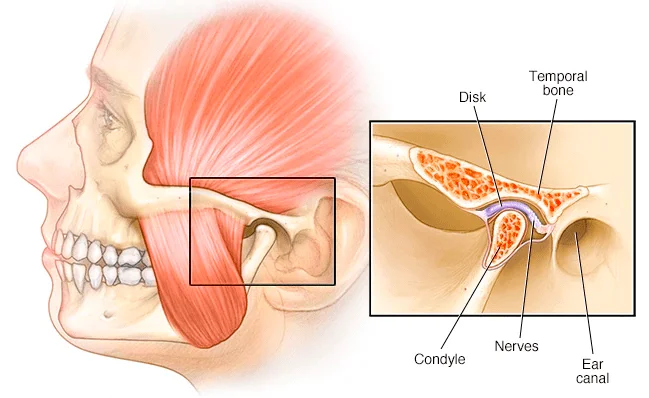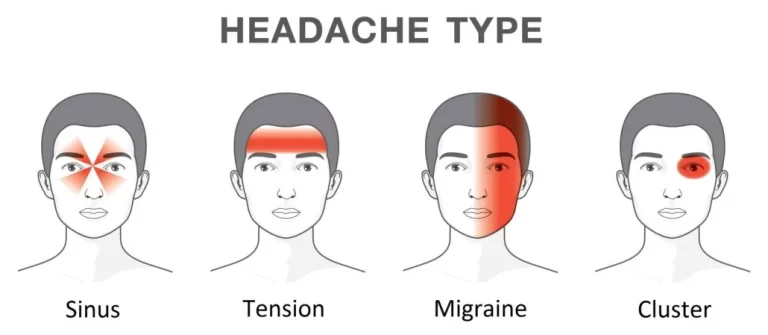What is Elbow Ligament/Tendon Strain?
The elbow joint makes it possible to bend and straighten the arm and rotate the forearm so that the palm of the hand faces up or down. The elbow is actually made up of three joints. These are where the bones of the upper arm, called the humerus, and those of the forearm, the ulna and radius, come together. These bones are supported by ligaments, tendons, and muscles. Ligaments are tough cords of tissue that attach bone to bone. Tendons attach muscles to bone, and muscles help the elbow to bend, extend, and rotate.
Though the words “sprain” and “strain” are used interchangeably, they are different types of injuries. A sprain occurs when the fibers in a ligament stretch or tear. A strain is a tear in the fibers of a muscle or a tendon. A lack of flexibility and strength in the ligaments, muscles, and tendons that support the elbow can lead to these injuries.
There are three main ligaments in the elbow joint; the medial collateral ligament, the lateral collateral ligament, and the annular ligament. Ligaments are short tough bands of fibrous connective tissue. They are attached to bones or cartilage and are responsible for holding bones together and stabilising joints.
In the elbow, the medial collateral ligament is found on the inside of the elbow, the lateral collateral ligament on the outer aspect of the elbow, and the annular ligament encircles the head of the radius, stabilising it inside a groove known as the radial notch. Although ligaments are relatively strong and rigid by nature, it is possible to injure them. Ligament injuries, also known as ligament sprains, are caused when the fibres become stretched or torn or even when a ligament completely ruptures. The worse the sprain or injury the more it will affect the ligament. Ligaments sprains or injuries can be classified into three grades:
– Grade 1 – is a stretching of the ligament or very mild tear. There is little to no instability of the joint resulting from this type of sprain and whilst there may not be much pain or inflammation, a mild sprain can increase the risk of re-injury.
– Grade 2 – is a more severe but still incomplete tear of the ligament. This results in some joint laxity or loss of stability. Swelling and bruising are usually present with this grade of ligament injury and use of the joint can be difficult.
– Grade 3 – is a complete tear or rupture of the ligament. This will result in severe swelling, bruising, and bleeding under the skin. As a result of a grade 3 ligament injury, the joint is unstable and unable to bear weight resulting in a severe loss of function.
Types of ligament strains include ulnar collateral ligament (UCL) strain, medial collateral ligament (MCL) strain, and lateral collateral ligament (LCL) strain.
Tendinitis which is inflammation in a tendon without a stretch or a tear, may require different types of treatments than sprains or strains. Many elbow sprains or strains are caused by repetitive use of the joint during sports such as tennis or golf or jobs such as carpentry. Overuse of the elbow can irritate the tendons that attach the muscles of the forearm to bone and cause them to swell, strain, or tear a condition commonly known as “tennis elbow.”
What causes Elbow Ligament/Tendon Strain?
Some elbow sprains and strains occur suddenly, such as when one breaks a fall with an outstretched arm. These types of injuries can also be caused by twisting the arm or by a blow to the elbow. Symptoms can include pain, tenderness, or swelling around the elbow during movement or at rest. It can become difficult to bend or extend the elbow, or you may experience bruising, redness, or warmth around the elbow.
Elbow Ligament/Tendon Strain Treatment
Physical therapy can help with elbow injuries. The goal of treatment is to improve the strength and flexibility of your forearm muscles. This can also. help improve blood flow to the tendons which do not get the same level of blood and oxygen supply as muscles normally receive. Once the pain eases, personalised exercises will be prescribed by your therapist. If in doubt, please seek professional advice. If in doubt, please seek advice from a physiotherapy professionals in Singapore.
Physiotherapy for Elbow Strains
For elbow ligament and tendon strains, physiotherapy may support recovery by improving strength, flexibility, and function over time. Visit our Physio Clinic in Singapore to learn how therapy can be part of a structured approach to rehabilitation.
Check out our popular articles: Diastasis Recti, Tight Back Muscles, Irritable Bowel Syndrome (IBS), Temporomandibular Joint (TMJ) Dysfunction, Tennis Elbow, Wrist Tendon Injury, Sciatica, Whiplash, Hernia, Herniated Disc (Slipped Disc).
